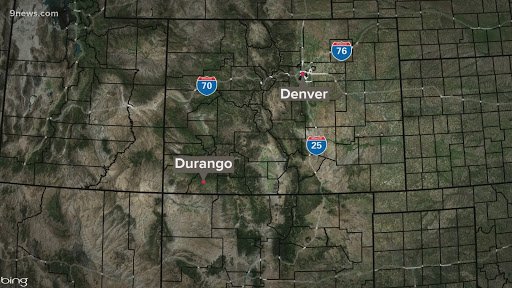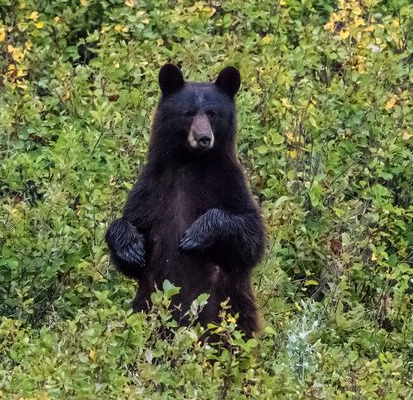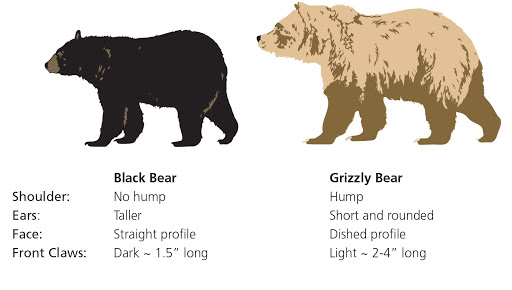
A 39 year old woman was found dead. She was walking her two dogs in Trimble, near Durango. Her boyfriend returned home to find the two dogs but his girlfriend was missing. After searching for about an hour he found her body. The Colorado Parks and Wildlife responded to the scene and said the body has signs of consumption.
What Animal Attacked Her?
The body was surrounded with bear scat and hair. Teams of men and dogs began searching for the bear and located a female black bear and her two cubs close to the scene. The bears were humanely euthanized and taken to the Colorado Parks and Wildlife service laboratory for a necropsy. “Whenever an animal is euthanized, we receive many questions about why that action was necessary,” said Colorado Parks and Wildlife Director, Dan Prenzlow. “Our responsibilities to the natural resources of the state are many, but we have no more important duty than to manage these resources in a manner that keeps Coloradans and our visitors safe. Euthanizing wildlife is never an action our officers take lightly, but we have an obligation to prevent additional avoidable harm.”
Why Were the Bears Euthanized?

The three bears were euthanized in order to keep Colorado’s people and visitors safe. Once a bear injures or consumes a human law enforcement can not risk the chance that it could happen again. Bears will return to a proven food source repeatedly. A bear that loses its fear of humans is very dangerous and the two cubs were taught to view humans as a food source. It will take two weeks for some testing to come back but Colorado Parks and Wildlife’s pathologist said the bears did not have any initial signs of disease or abnormalities. An autopsy on the deceased woman is expected to occur on Tuesday by the La Plata County coroner’s office. The coroner will determine the official cause of death and identify the remains. According to Colorado Parks and Wildlife the following is how you should conduct yourself when face to face with a bear.
Viewing Etiquette if You See a Bear
- Respect a bear’s space. Binoculars and spotting scopes allow you to view bears without getting too close.
- Never approach, crowd, pursue, or displace bears. If a bear changes its behavior because of your presence, you are too close! Also, check with the park you are visiting for viewing distance regulations, which may vary based on species and terrain. For example, Yellowstone National Park requires visitors to keep a distance of at least 100 yards (300 feet); Shenandoah National Park recommends 200 feet or more.
- Stay in groups and minimize noise and movement. However, in areas of low visibility or when you’re out on the trail, reduce chances of surprise encounters by staying alert and talking calmly to identify yourself as a human, not another animal.
- Stay on designated trails whenever possible.
- Leave “orphaned” or sick bears alone. Young animals that appear alone usually have a mother waiting nearby. Never get between a mother and her cub.
- Leave pets at home.
- Give bears room to pass. Do NOT run from a bear.
- Let bears eat their natural foods. Prevent bears from getting human food by learning about food storage requirements.
- You are responsible for your safety and the safety of wildlife. If a bear approaches you, it is your responsibility to move away and maintain a safe distance.

Colorado Parks and Wildlife also gives us extra steps we can take to attempt to stay safe once a bear has noticed you.
- Identify yourself by talking calmly so the bear knows you are a human and not a prey animal. Remain still; stand your ground but slowly wave your arms. Help the bear recognize you as a human. It may come closer or stand on its hind legs to get a better look or smell. A standing bear is usually curious, not threatening.
- Stay calm and remember that most bears do not want to attack you; they usually just want to be left alone. Bears may bluff their way out of an encounter by charging and then turning away at the last second. Bears may also react defensively by woofing, yawning, salivating, growling, snapping their jaws, and laying their ears back. Continue to talk to the bear in low tones; this will help you stay calmer, and it won’t be threatening to the bear. A scream or sudden movement may trigger an attack. Never imitate bear sounds or make a high-pitched squeal.
- Pick up small children immediately.
- Hike and travel in groups. Groups of people are usually noisier and smellier than a single person. Therefore, bears often become aware of groups of people at greater distances, and because of their cumulative size, groups are also intimidating to bears.
- Make yourselves look as large as possible (for example, move to higher ground).
- Do NOT allow the bear access to your food. Getting your food will only encourage the bear and make the problem worse for others.
- Do NOT drop your pack as it can provide protection for your back and prevent a bear from accessing your food.
- If the bear is stationary, move away slowly and sideways; this allows you to keep an eye on the bear and avoid tripping. Moving sideways is also non-threatening to bears. Do NOT run, but if the bear follows, stop and hold your ground. Bears can run as fast as a racehorse both uphill and down. Like dogs, they will chase fleeing animals. Do NOT climb a tree. Both grizzlies and black bears can climb trees.
- Leave the area or take a detour. If this is impossible, wait until the bear moves away. Always leave the bear an escape route.
- Be especially cautious if you see a female with cubs; never place yourself between a mother and her cub, and never attempt to approach them. The chances of an attack escalate greatly if she perceives you as a danger to her cubs.
What To Do If You Are Attacked
Most bears are only interested in protecting food, cubs, or their space so attacks are rare. Being mentally prepared can help you have the most effective reaction. Every situation is different, but below are guidelines on how brown bear attacks can differ from black bear attacks. Help protect others by reporting all bear incidents to a park ranger immediately. Above all, keep your distance from bears!
- Brown/Grizzly Bears: If you are attacked by a brown/grizzly bear, leave your pack on and PLAY DEAD. Lay flat on your stomach with your hands clasped behind your neck. Spread your legs to make it harder for the bear to turn you over. Remain still until the bear leaves the area. Fighting back usually increases the intensity of such attacks. However, if the attack persists, fight back vigorously. Use whatever you have at hand to hit the bear in the face.
- Black Bears: If you are attacked by a black bear, DO NOT PLAY DEAD. Try to escape to a secure place such as a car or building. If escape is not possible, try to fight back using any object available. Concentrate your kicks and blows on the bear’s face and muzzle.
If any bear attacks you in your tent, or stalks you and then attacks, do NOT play dead. This kind of attack is very rare, but can be serious because it often means the bear is looking for food and sees you as prey so fight back.
Written by: Erinn Malloy
